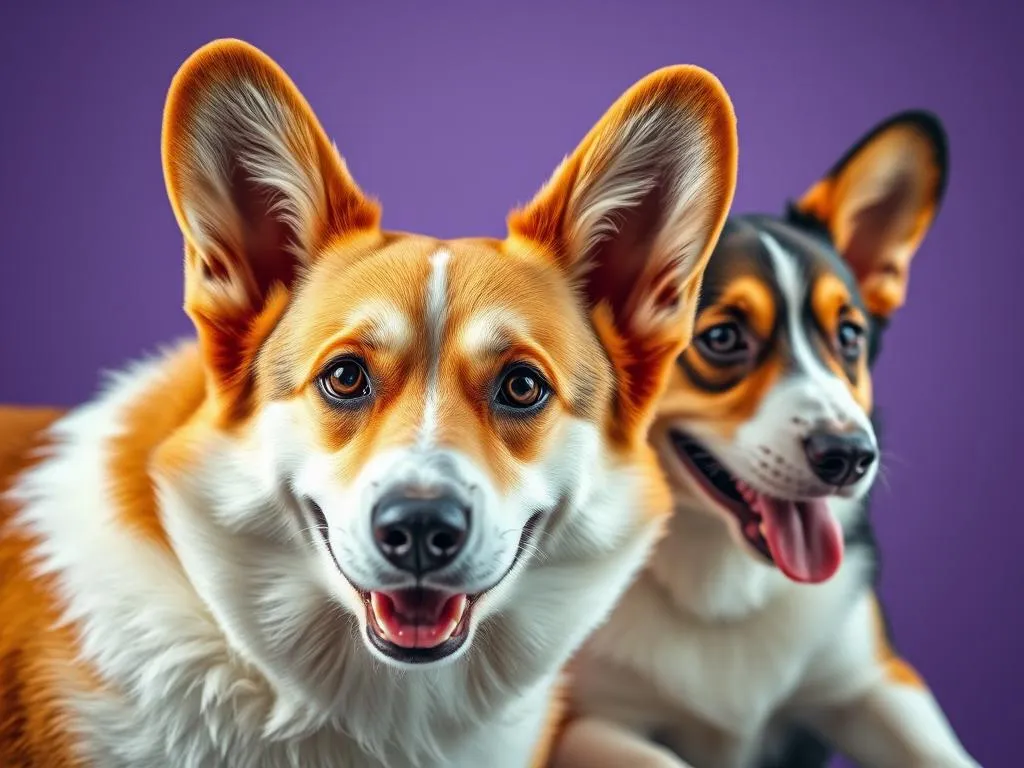
Corgis have surged in popularity over the years, captivating dog lovers with their charming personalities and adorable appearances. Their short legs and long bodies, coupled with their playful demeanor, make them a favorite among families and individuals alike. However, aside from their delightful temperament, one of the most fascinating aspects of Corgis lies in their colors and patterns. Understanding these variations is essential for anyone interested in the breed, whether for identification purposes or personal preference.
Understanding Corgi Breeds
Types of Corgis
There are two primary breeds of Corgis: the Pembroke Welsh Corgi and the Cardigan Welsh Corgi. Each breed has distinct characteristics and historical backgrounds that contribute to their unique appeal.
-
Pembroke Welsh Corgi: Known for its fox-like appearance, the Pembroke is often recognized by its docked tail. This breed is typically more outgoing and has a slightly smaller frame than its Cardigan counterpart. They are recognized by their friendly disposition, making them excellent companions for children and families.
-
Cardigan Welsh Corgi: The Cardigan is slightly larger and has a long, bushy tail. This breed is often described as more reserved but is equally affectionate. They tend to be more independent than Pembrokes, making them unique in their own right.
Key Differences Between the Breeds
When considering corgi colors and patterns, it’s crucial to note the differences between these breeds:
-
Physical Traits: Pembrokes usually have a more refined appearance, while Cardigans boast a more robust build. The ear shape may also differ, with Pembrokes typically having slightly more pointed ears.
-
Temperament: While both breeds are friendly, Pembrokes are often more eager to please, making them easier to train. Cardigans may take a bit longer to warm up to new experiences or people.
-
Coat Variations: Both breeds share similar coat textures, but the color variations can differ significantly due to their genetic backgrounds.
Corgi Color Variations
Common Corgi Colors
Corgis come in a variety of colors. Understanding these variations can help new owners select the right pet for their home.
-
Red: A classic color for both breeds, red can range from a deep mahogany to a lighter shade. The richness of this color often highlights the Corgi’s lively personality.
-
Fawn: This color is characterized by a light tan or yellowish hue. Fawn Corgis are quite popular due to their warm, inviting appearance.
-
Black and Tan: This striking combination features a predominantly black coat with tan markings on the face, legs, and chest. The contrast makes this color particularly eye-catching.
-
Blue: While not as common, blue Corgis have a unique steel-gray appearance. This color is often a result of specific genetic variations.
Less Common Colors
Corgis can also exhibit less common colors that intrigue many enthusiasts:
-
Sable: This color variation is characterized by a base coat of gold or tan with black-tipped hairs. Sable Corgis can appear to change color with different lighting.
-
Merle: Merle Corgis have a marbled coat that can include a mix of colors, often with a striking blue eye. However, it’s essential to consider the health implications associated with this pattern.
-
Brindle: Brindle Corgis showcase a striped pattern resulting from a mix of darker and lighter hairs, giving them a unique, tiger-striped appearance.
Color Genetics
Understanding the genetics behind Corgi colors and patterns is fascinating. Coat color is determined by specific genes, with certain colors being dominant and others recessive. For example, the red color is dominant over fawn, which means that if a red Corgi is bred with a fawn Corgi, the puppies are more likely to inherit the red coat. In contrast, the merle gene is a result of a specific mutation and can lead to a range of different color expressions.
Corgi Patterns Explained
Solid Patterns
Solid patterns in Corgis are characterized by a uniform color throughout the coat. An example would be a red or fawn Corgi with no distinct markings. These colors are often favored for their simplicity and elegance.
Bi-Color Patterns
Bi-color patterns feature two distinct colors. A common example is the black and tan Corgi, where the body is primarily black, accented by tan markings on the face and legs. This pattern is quite popular and often sought after due to its striking contrast.
Tri-Color Patterns
Tri-color patterns incorporate three distinct colors. The most common tri-color Corgi exhibits a combination of black, tan, and white. The white usually appears on the face and paws, providing a handsome contrast to the darker colors.
Merle Patterns
The merle pattern is one of the most intriguing and distinctive among Corgis. This pattern features a mottled appearance, often with patches of lighter and darker colors. While merle Corgis can be stunning, prospective owners should be aware of potential health issues associated with this pattern, including vision and hearing problems.
Choosing a Corgi Based on Color and Pattern
Personal Preferences
When it comes to choosing a Corgi, personal preference plays a significant role. Many owners gravitate towards specific colors and patterns based on aesthetic appeal. Some may prefer the classic look of a red Corgi, while others might be drawn to the uniqueness of a merle.
Breed Standard Considerations
For those interested in showing their Corgis, it’s essential to consider breed standards. Certain colors and patterns may be more favorable in show rings. For example, while all colors are recognized, a solid red or sable may be more desirable than a merle in some circles. Understanding these nuances can help potential owners make informed decisions.
Health Implications
It’s crucial to consider that certain colors and patterns may be associated with specific health concerns. For instance, merle Corgis can face an increased risk of genetic disorders. Responsible breeding practices should always be a priority, ensuring that the health of the dog is not compromised for the sake of aesthetics.
Grooming and Care for Corgi Coats
Coat Types and Care Needs
Corgis typically have a double coat, consisting of a dense undercoat and a longer outer coat. This structure helps protect them from various weather conditions. While both breeds have similar coat types, the care requirements may vary based on the individual dog’s coat length and density.
Grooming Techniques
Maintaining a Corgi’s coat is essential for their overall health. Regular grooming is recommended:
-
Brushing Frequency: Corgis should be brushed at least once a week to manage shedding and keep their coat healthy. During shedding seasons, which usually occur in spring and fall, more frequent brushing may be necessary.
-
Bathing Recommendations: Corgis do not require frequent baths; every few months is usually sufficient unless they get particularly dirty. It’s best to use a dog-specific shampoo to avoid skin irritation.
Seasonal Coat Changes
Corgis experience seasonal shedding, which is more pronounced during spring and fall. Owners should be prepared for increased shedding during these times and adjust their grooming routines accordingly. Utilizing grooming tools like de-shedding brushes can help manage loose hair effectively.
Corgi Colors and Patterns in Popular Culture
Corgis in Media
The popularity of Corgis has exploded in media, from films to social media platforms. Their unique colors and patterns have made them a favorite subject for various forms of art and merchandise. Corgis are often depicted in cartoons, advertisements, and even as the beloved pets of celebrities, further solidifying their status as a cultural icon.
Corgi Merchandise
The charm of Corgis has led to an array of merchandise featuring various colors and patterns. From plush toys to apparel, Corgi-themed products are widely available. The unique aesthetics of different Corgi colors and patterns often influence the design of these products, appealing to a wide audience of dog lovers.
Conclusion
Understanding Corgi colors and patterns is essential for anyone considering welcoming one of these delightful dogs into their home. Each color and pattern offers unique beauty and charm, providing potential owners with a range of options to suit their preferences. Regardless of the coat color or pattern, the joy and companionship that a Corgi brings are truly what matters most. Embracing their unique appearance is just one aspect of appreciating the delightful nature of Corgis—these lovable companions will undoubtedly bring happiness into any home.









